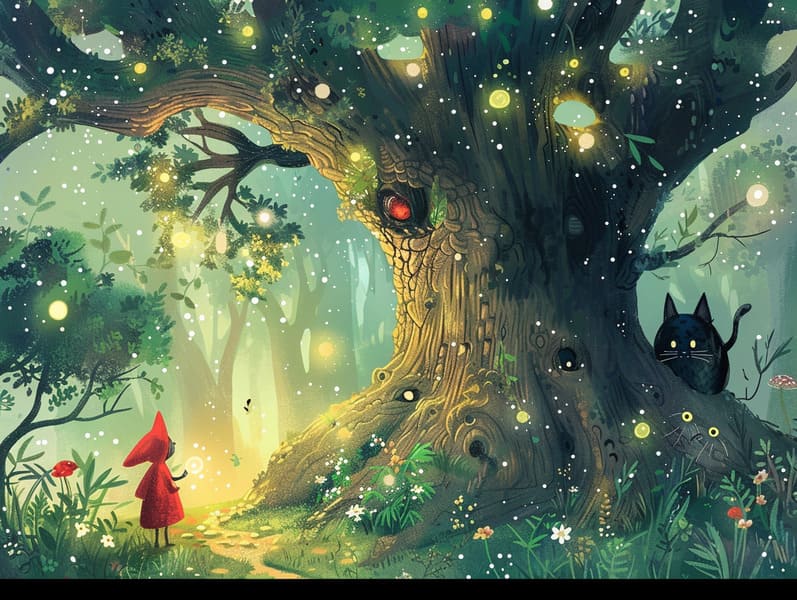The Creation of Grimm's Fairy Tales with Their Persistent Enchantment.
The Creation of Grimm's Fairy Tales with Their Persistent Enchantment.
Blog Article

Popular fairy tales have timeless appeal. These tales have been told from one generation to the next far before they were ever inscribed. They originated from a variety of backgrounds, including Middle Eastern traditions. They were initially conveyed among grown-ups, often carrying themes and messages aligned with the societal norms and beliefs of the time.
The Grimm brothers, Jacob and Wilhelm (the Grimm brothers), were among the first to collect and release many of these beloved fairy tales. Their collection, "Grimm's Fairy Stories," included tales like "The True Bride," "Little Brother and Little Sister," and "The True Story of Snow White," which have since become cornerstones in the world of traditional fairy tales. Similarly, Andersen's imaginative stories, such as "The Sea Maid," and "The Story of the Ugly Duckling," have captured hearts worldwide, establishing their place in the pantheon of classic fairy tales.
Even though they are old, traditional fairy tales remain as relevant as ever, especially as bedtime stories for kids. These charming stories are now available in numerous formats, including richly illustrated books, whimsical animations, and online storybooks.
Their continued relevance can be ascribed to several whimsical characteristics:
Crucial Morals: Ancient fairy tales often convey important moral lessons. Fairy tales like "The Boy Who Cried Wolf" teach the significance of truthfulness, while "The Story of the Tortoise and the Hare" point out the benefits of determination and humbleness. These stories offer young readers clear distinctions between truth and falsehood, forming their moral compass in a kind yet lasting way.
Empathy and Awareness: Fairy tales frequently include protagonists facing obstacles and hardships, encouraging kids to comprehend with their struggles and support their triumphs. For instance, "The Tale of Beauty and the Beast" demonstrates the merit of looking past the exterior to see the true nature of a person, strengthening perception and awareness.
Cultural Awareness: Many traditional fairy tales are imbued with the cultural contexts from which they emerged. Delving into these fairy tales can provide fascinating glimpses into different ways of life, enhancing a sense of world understanding and knowledge.
Creativity and Fantasy: The fanciful elements in ancient fairy tales—mythical creatures—activate children’s creative dreams. These tales move readers to mythical realms, activating creative dreams and a sense of awe that stays a lifetime.
Traditional fairy tales are not only alluring but also educational. They function as magical tools in enhancing various cognitive and emotional skills in young ones. When fairy tales are told out loud, they boost language proficiency by showing new language and elaborate sentence structures. This practice also nurtures hearing perception and attentiveness, as young readers keep up with the story, expectant to see what happens next.
Furthermore, debating the themes and characters of old fairy tales can strengthen thought processes and intellectual skills. Children are instructed to notice patterns, anticipate outcomes, and catch on to cause and effect. These debates also boost little ones voice their thoughts and feelings, advancing their emotional intelligence.
In today’s technological era, the availability of web-based fairy tales has made these fairy tales more acquirable than ever. Websites and web apps extend large libraries of traditional fairy tales that can be looked at or listened on anytime, anywhere. Fairy tales read out loud are particularly sought after, presenting an interactive way for young readers to relish these whimsical stories. Narrated books and read-aloud videos carry characters and settings to life, often augmented by bewitching harmonies and musical scores that improve the narrative adventure.
The unfading fascination of old fairy tales lies in their ability to modify to modern society while preserving their basic principles. Contemporary modernizations of these stories often bring in more varied protagonists and modern settings, making them understandable to today’s audience. However, the basic principles of fortitude, empathy, and justness remain unchanged, continuing to strike a chord with listeners of all ages.
Timeless fairy tales also offer a sense of serenity and closeness. this site They confer upon a structured narrative with a evident beginning, middle, and end, often ending with the resolution of conflicts and the triumph of truth over falsehood. This foreseeability can be soothing for children, extending a sense of solidity in an shifting world.
Traditional fairy tales continue to delight and coach new generations, maintaining their grace and pertinence in modern society. As bedtime stories for kids, they introduce a perfect blend of enchantment and education, encouraging moral values, empathy, and creativity. The abundance of online fairy tales and the favor of fairy tales recited confirm that these timeless tales remain attainable to new generations.
By preserving and narrating these narratives, we continue to extol the rich tapestry of folklore and cultural heritage. Whether you are seeing a vibrantly illustrated book, exploring a online collection, or hearing an read-aloud book, the majesty of timeless fairy tales is always within reach. These fairy tales point out of the continued nature of fairy tales and its ability to join us across centuries and lands.
If you are browsing a richly illustrated book, discovering a electronic library, or listening on an read-aloud book, the allure of popular fairy tales is always within reach.
These narratives teach us of the everlasting strength of fairy tales and its ability to unify us across epochs and places, establishing a link that fascinates and enlightens alike.